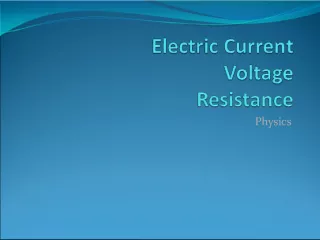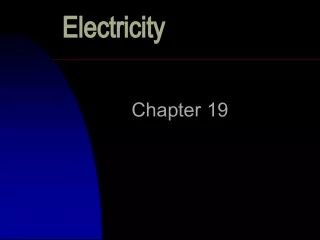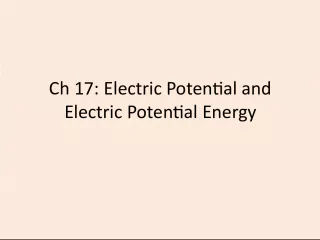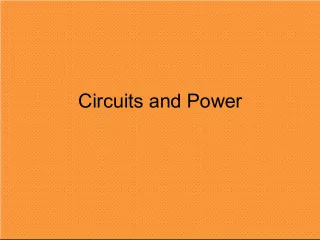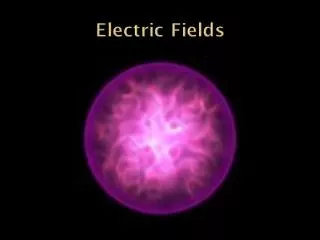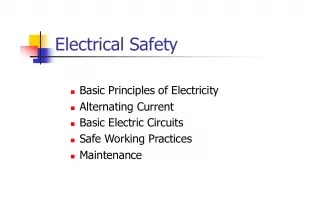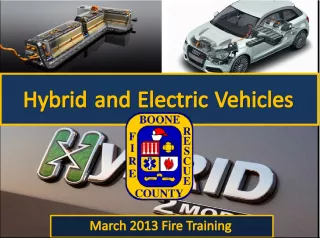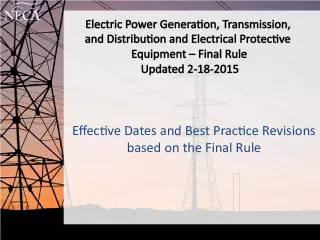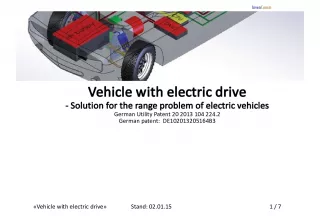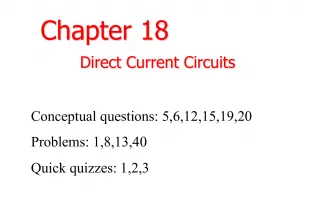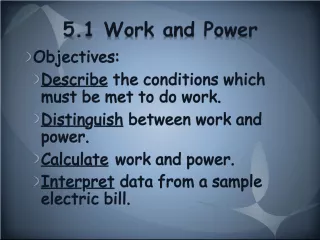Understanding Electric Current and Resistance
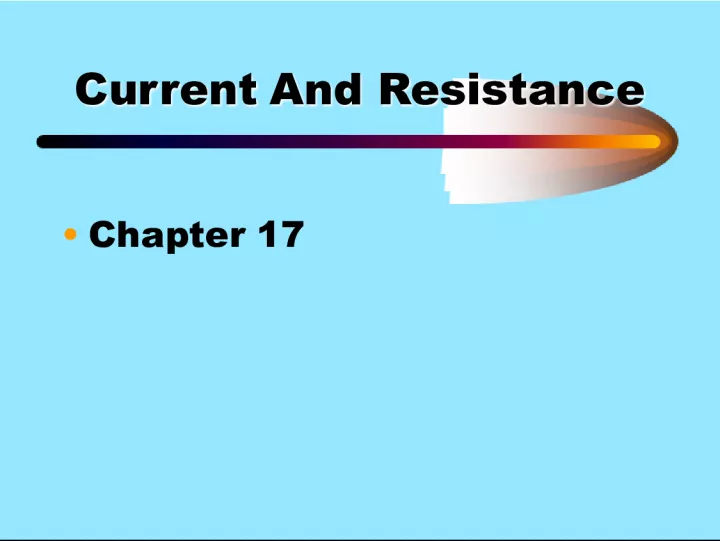

Learn about the basics of electric current, resistance, and charge flow, including the unit of measurement - Ampere, and conventional current flow.
- Uploaded on | 1 Views
-
 nigoslav
nigoslav
About Understanding Electric Current and Resistance
PowerPoint presentation about 'Understanding Electric Current and Resistance'. This presentation describes the topic on Learn about the basics of electric current, resistance, and charge flow, including the unit of measurement - Ampere, and conventional current flow.. The key topics included in this slideshow are . Download this presentation absolutely free.
Presentation Transcript
1. Current And Resistance Current And Resistance • Chapter 17
2. Electric Current Electric Current • Current exists whenever charges of like signs move 17.1
3. • Current is the rate of flow of charge
4. • The unit for current is the Ampere (A). 1 Ampere = 1 Coulomb/Second
5. • Conventional (positive) current flow is used. – Charge carriers may be positive or negative 75
6. Drift Speed Drift Speed • The speed of the charge carriers is an average speed called the drift speed ( d ) . n is the number of charge carriers per unit volume 17.2
7. Current Produces Heat Current Produces Heat • Internal collisions between charge carriers produce heat. 17.4A
8. Current Flow Analogies • Water flow in a pipe • Marbles in a long pipe • Links in a bicycle chain 20-21
9. Resistance Resistance • Resistance (R) is opposition to the flow of current – Measured in units called ohms • Symbol ( ) – Occurs because of collisions between electrons
10. Ohm’s Law
11. Current And Voltage Measurements • Multimeters can measure voltage,current and resistance in an electrical circuit.
12. It is very important to choose the correct range and to connect the multimeter leads properly.
13. Ohmic and Non-Ohmic Resistance Ohmic and Non-Ohmic Resistance • Ohm’s Law – Ohmic resistance is constant over a wide range of voltages. – Non ohmic resistance varies with voltage • Semiconductor diodes – One way valves for electricity 17.5, 226, 175
14. Ohmic Resistance
15. Non-Ohmic Resistance Non-Ohmic Resistance
16. Resistors Resistors • A resistor is a device which has a specific amount of resistance – Circuit diagram symbol
17. Examples of Resistors Examples of Resistors
18. Resistor Color Code Resistor Color Code
19. Resistivity Resistivity • Resistivity is a constant of proportionality which affects the resistance of a specific material. – Units: ( m) • Values are in Table 17.1 (Pg. 577)
20. Resistance and Resistivity
21. Applications Involving Resistance Applications Involving Resistance • The carbon microphone
22. • The carbon microphone – Sound waves cause a change in resistance. – Frequency response is very poor. (20 Hz to 4,000Hz) • The normal human hearing range is between 20 Hz and 20,000 Hz.
23. Temperature Variation Of Resistance Temperature Variation Of Resistance • Usually, the resistivity of a metal increases with an increase in temperature.
24. Temperature Variation Of Resistance Temperature Variation Of Resistance • Temperature coefficient of resistivity ( ) – Values are in Table 17.1
25. Superconductors Superconductors • The resistance of some metals and compounds falls to virtually zero below the critical temperature. (Tc) – Values are in Table 17.2 (Pg. 584)
26. • Currents in a superconductor, could flow forever without an applied voltage.
28. • The goal is to produce high temperature superconductors – Mercury-oxide-based • The highest temperature so far is 150 K (-123 o C)
29. • What is the ultimate goal? Superconductivity at room temperature!
30. Applications of Superconductors Applications of Superconductors – Microwave devices – Superconducting power lines – Mag-Lev trains – Motors
31. Cells and Batteries Cells and Batteries • A dry cell transforms chemical energy into electrical energy • Some of this energy becomes thermal energy 178, 179
33. Resistive Circuits Resistive Circuits • A simple resistive circuit • Assume no loss of energy in the wires. • Joule heating occurs in the resistor. 17.11
34. Electrical Power Electrical Power • Electrical power is measured in Watts (W)
35. Electrical Energy Electrical Energy • Electrical energy is measured in kilowatt hours (kWh) • Consumers Energy bill? 1 kWh = 3.60 x 10 6 J
36. A Kilowatt-Hour Meter A Kilowatt-Hour Meter
37. Electrical Activity In The Heart Electrical Activity In The Heart • Muscle action is initiated by electrical activity • Voltage pulses cause the heart to beat – These electrical waves travel through the body • Monitored by electrocardiographs • EKG (electrocardiogram) 177
38. • If the atrial and ventricular contractions become irregular, we have fibrillation. – Defibrillators can be used to restore the normal heart rhythm 17.13
39. A Bad EKG A Bad EKG
40. Cardiac Pacemakers Cardiac Pacemakers • Cardiac pacemakers may be implanted under the skin and attached with a wire to the right ventricle. – A lithium battery is used to charge a capacitor. It discharges 60 times per minute to stimulate the heart beat. If the heart is beating normally, the capacitor is not allowed to charge.
41. Pacemaker Location Pacemaker Location
42. An Actual Pacemaker An Actual Pacemaker
43. Cardioverter Defibrillators Cardioverter Defibrillators • Implanted Cardioverter Defibrillators (ICDs) can monitor, record, process information, and send corrective signals to the heart. – The lithium batteries last 4 – 5 years. – Table 17.3 (Defibrillator Properties)
44. Electrical Activity In The Brain Electrical Activity In The Brain • The brain produces electrical waves – Monitored by electroencephalographs • EEG
45. An EEG An EEG
46. Questions 1, 3 - 5, 7, 8, 10 - 12 Pg. 587
